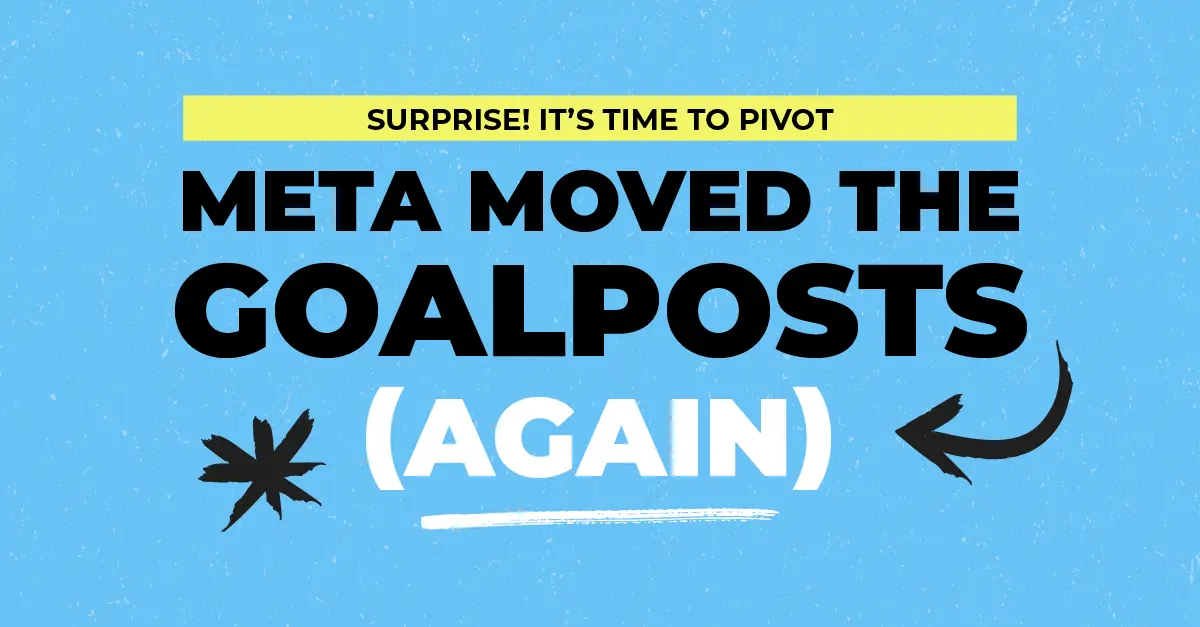Another Meta algorithm update.
Another dip in reach. A spike in cost. Retargeting audiences that suddenly felt… distant.
If you’ve been watching your ad performance wobble and wondering if something broke, it didn’t.
But it did change. And if you haven’t changed with it, performance probably dropped.
At EXPAND, we don’t panic when this happens. We pivot.
Here’s how.
1. What Changed
The latest Meta update fundamentally shifted how content is prioritised in the feed. It now leans heavily into:
- Creative-first performance: Strong creative can now outperform even the most sophisticated setups.
- Movement > Polish: Native-feeling video, POV-style content, and UGC outperform static, branded assets.
- Hooks matter more than ever: If you don’t win the scroll in the first 3 seconds, you’re gone.
- Broader targeting: Meta’s machine learning now relies on wider audience pools and creative-led personalisation.
- Shrinking retargeting pools: Between iOS updates and privacy changes, your “warm” audience is smaller and colder than it used to be.
This isn’t just a technical change — it’s a creative one.
Meta is rewarding storytellers, not spreadsheet tweakers.
2. What We Did
We shifted our focus from ad setup to creative systems: building a structure that lets performance follow content, not the other way around.
At EXPAND, we:
- Restructured our funnel logic for broader prospecting and deeper storytelling
- Prioritised short-form, native video that moves quickly and feels real
- Rolled out POV-style ads and influencer UGC with simple hooks and clear payoffs
- Re-evaluated attribution windows and adopted blended ROAS tracking across channels
- Tested creative variations, not just targeting sets
- Developed platform-specific content calendars to respond to algorithm behaviour
This meant retraining not just our media buyers, but our designers, content creators, and even clients.
3. Why It Matters
The brands that win aren’t the ones with the best ad hacks.
They’re the ones who adapt creatively.
This isn’t about “working around” the algorithm.
It’s about understanding what the algorithm is optimised to surface — and creating content that belongs there.
If your ad feels like an ad, it’s ignored.
If it feels native, it gets watched.
If it’s watchable, it gets rewarded.
Case Study: Chepa Africanprint Streetwear
CHEPA, a South African streetwear brand, has always had a bold visual identity and premium edge. But post-update, even great visuals weren’t enough.
We pivoted by:
- Introducing lo-fi video formats: phone footage, behind-the-scenes, authentic moments
- Capturing movement: walking, zipping jackets, tying laces: anything that catches the scroll
- Layering hook-driven text overlays and clear calls to action
- Expanding targeting to let Meta’s AI optimise, while we focused on creative quality and quantity
The results (in just 3 weeks):
- CTR improved 32%
- Cost-per-add-to-cart dropped 21%
- ROAS rebounded above pre-update benchmarks
Just as importantly, organic engagement rose too.
The brand didn’t just perform better, it started feeling more human again.
Key Takeaways
If you’re feeling the pressure post-update, here’s what we’d recommend:
✅ Stop obsessing over audience settings. Start obsessing over creative hooks.
✅ Focus less on perfection. Focus more on movement, pacing, and authenticity.
✅ Think like a content creator, not just a brand.
✅ Build a creative engine, not a one-off asset.
✅ Don’t resist the change, ride it.
Because in the space between platform updates and performance drops, adaptability lives.

